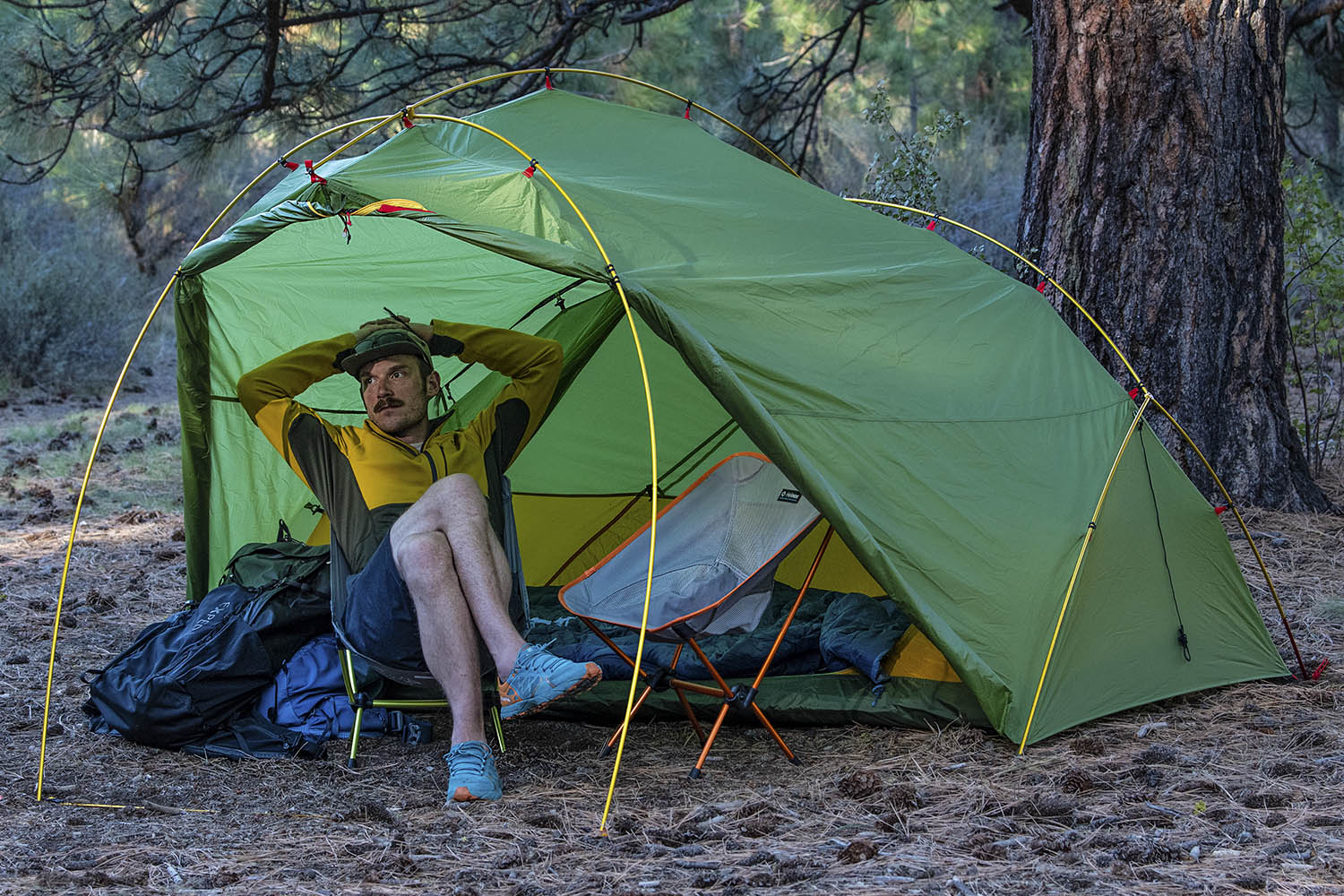
Tents & Shelters
-
How are EXPED tents designed and constructed?
We're glad you asked! We have an ENTIRE PAGE ON WHY OUR TENTS ARE BUILT THE WAY THEY ARE and the defining characteristics of an EXPED tent.
-
Do I need to seam seal an "Extreme" version tent?
"Extreme" tents are have silicone-coated flies. The seams of a silicone-coated tent cannot be factory seam-taped. The seams are sewn with cotton-wrapped polyester thread that expands when wet to seal the stitch holes. The seams of an "Extreme" series tent can be treated with a silicone seam sealer. We recommend Seam Grip SIL Silicone Tent Sealant.
-
Do I need a footprint for my tent?
A footprint is recommended for your EXPED tent as it protects the tent floor from abrasion or damage through sharp objects. Tent footprints are sold separately.
-
How do I connect my Mira footprint to the tent?
The footprint for the Mira tent is designed to be free floating below the inner tent. You can also set the tent up in Ultralight Mode, using only the footprint, rain fly, and poles. In this situation, the poles go directly into the footprint grommets and side-release buckles on the rain fly can be paired to side-release buckles on the grommeted webbing of the tent footprint.
-
How do I care for my EXPED tent?
A properly looked after and maintained tent is a happy tent. Here's some of our general maintenance and care tips:
UV Radiation: Nothing “kills” a tent faster than UV radiation. Lightweight tents are not intended for use in prolonged, stationary settings in which they remain exposed to the sun. To prevent degradation of the tent fabrics set the tent up in the shade, cover it with a tarp or take it down during the day. Also consider alternative products designed for such use made of canvas or awning materials. Damage due to UV exposure is not covered by the warranty.
Cleaning: A dusty or dirty tent is best washed with a water hose and sponge. Never dry clean or place a tent in a washing machine or tumble dryer as this may damage the coatings and fabrics.
Should the canopy need cleaning due to stains or odor, hand wash in a tub using mild detergent. Do not wash the tent floor fabric with detergent as this may damage the coating. Rinse and dry thoroughly.
Storage: Dry and air your tent thoroughly prior to storage. Note that it may take a couple days for all seams, zippers, and webbing to completely dry. Store the tent in a cool dry area away from direct sunlight as even synthetic fabrics may be affected by mildew when exposed to humidity, thus damaging the waterproof coating on your tent.
If the tent has been used in a salty environment (sea kayaking, salt deserts, etc.), we strongly recommend setting it up and spraying all components with fresh water and thoroughly drying before storing.
Zippers: Sand, dust and grit cause abrasion and damage to the zipper. Wash with water and clean with a toothbrush when necessary. Apply a bit of silicone lubricant for a long lasting and smooth running zipper glider.
-
What does the water column value mean and how is it tested?
Water column is a unit of measurement used to describe the resistance of a fabric to water penetration. A 10 cm² fabric sample is tensioned under a water cylinder and the height of this column (in millimeters), when droplets are first pressed through the fabric, determines the water column value. Examples include the various levels achieved by different tent floor fabrics in our line. We often use fabrics with a 3,000mm rating for 3-season tents and up to 10,000mm fabrics for winter/expedition tents.
For more information on common terms used to describe our tents and materials used, refer to our tent materials & general terms guide.
